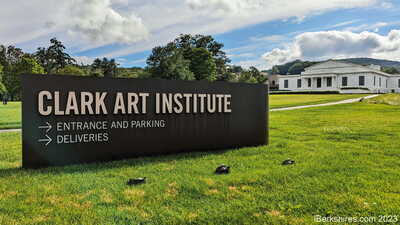Clark Art Presents Book Talk
WILLIAMSTOWN, Mass. — On Tuesday, Feb. 6 at 5:30 pm, the Clark Art Institute presents a book talk by noted art historian Laure de Margerie about her new book "French Sculpture: An American Passion."
The book is based on de Margerie's research as the founding director of the French Sculpture Census, the first comprehensive catalogue of French sculpture (1500–1960) in American public collections. This free event takes place in the Clark's auditorium, located in the Manton Research Center.
According to a press release:
"French Sculpture: An American Passion" unveils the story of the American taste for French sculpture and of the collectors, dealers, decorators, and curators who championed these works. De Margerie considers the role and meaning of French sculpture in America's ever-changing society, ranging from public monuments with their sometimes-controversial symbolism to the stories of the French women and men who shaped the American artistic landscape.
The book details the fascinating saga of American interest in French sculpture, ranging from 1792 when celebrated French artist Jean-Antoine Houdon first sculpted George Washington's likeness, to the monumental gift of the Statue of Liberty nearly 100 years later, through to the 1900s when artists like Auguste Rodin, Constantin Brancusi, and Marcel Duchamp were championed by U.S. museums.
De Margerie was head of the Sculpture Archives at the Musée d'Orsay in Paris from 1978 through 2009. During her tenure, she was part of the team that installed the Orsay's sculpture collection for the museum's 1986 opening, co-authored the Musée d'Orsay's collection catalogue, and curated numerous exhibitions.
A 5 pm reception in the Manton Research Center reading room precedes the event. Copies of French Sculpture: An American Passion will be available for purchase at the talk and in the Museum Store.
Free; advance registration required at
clarkart.edu/events. Accessible seats available; for information, call 413 458 0524. Admission to the Clark is free through March 2024.
Tags: Clark Art,

